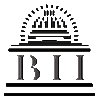Piramal Healthcare Limited has inked a pact to purchase worldwide rights to the molecular imaging research and development portfolio of Bayer Pharma AG via its newly developed arm – Piramal Imaging SA.
The portfolio consists rights to florbetaben, which is presently in the final stages of its Phase 3 clinical trials. First Phase III results will be unveiled in New Orleans at the American Academy of Neurology Annual Meeting on April 25.
Florbetaben is a PET tracer used for the detection of beta-Amyloid plaque deposition in the brain. It is believed that the detection of beta-Amyloid depositions is likely to lead to early diagnosis and more specific treatment of Alzheimer’s disease.
Ajay Piramal, Chairman Piramal Group, said, “This is the second acquisition of late stage assets after our acquisition of assets of BioSyntech in 2011, where we have recently received the European CE mark approval for an innovative bio-orthopaedic product for cartilage repair, BST-CarGel, which enables the company to commercialize BST-CarGel in all of the countries in the European Union. We plan to build a promising portfolio in the Pharma space, including our newly acquired Molecular Imaging assets, which will help us create a global branded Pharma business.”
According to the pact, Piramal will be having the intellectual property (consisting patents, trademarks and know-how), worldwide development, marketing and distribution rights of the lead compound florbetaben.
Ritu Pal
Marketing Executive
BII
The portfolio consists rights to florbetaben, which is presently in the final stages of its Phase 3 clinical trials. First Phase III results will be unveiled in New Orleans at the American Academy of Neurology Annual Meeting on April 25.
Florbetaben is a PET tracer used for the detection of beta-Amyloid plaque deposition in the brain. It is believed that the detection of beta-Amyloid depositions is likely to lead to early diagnosis and more specific treatment of Alzheimer’s disease.
Ajay Piramal, Chairman Piramal Group, said, “This is the second acquisition of late stage assets after our acquisition of assets of BioSyntech in 2011, where we have recently received the European CE mark approval for an innovative bio-orthopaedic product for cartilage repair, BST-CarGel, which enables the company to commercialize BST-CarGel in all of the countries in the European Union. We plan to build a promising portfolio in the Pharma space, including our newly acquired Molecular Imaging assets, which will help us create a global branded Pharma business.”
According to the pact, Piramal will be having the intellectual property (consisting patents, trademarks and know-how), worldwide development, marketing and distribution rights of the lead compound florbetaben.
Ritu Pal
Marketing Executive
BII




